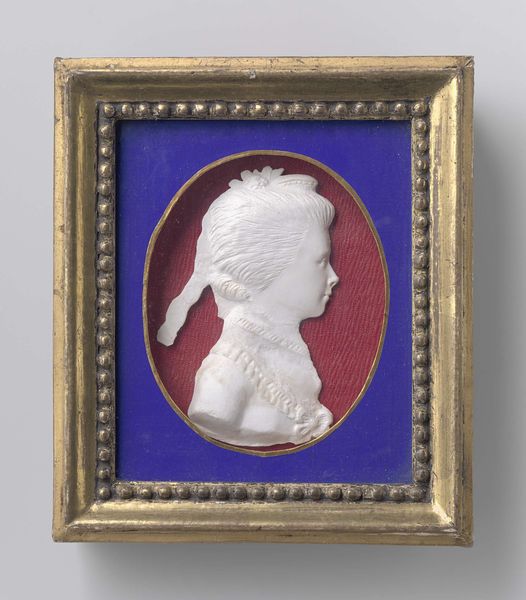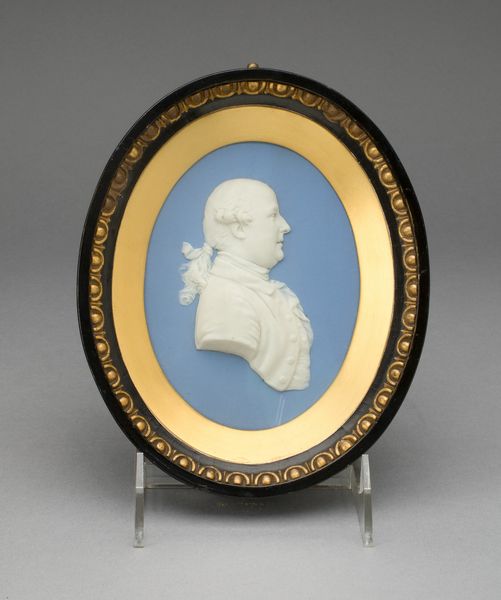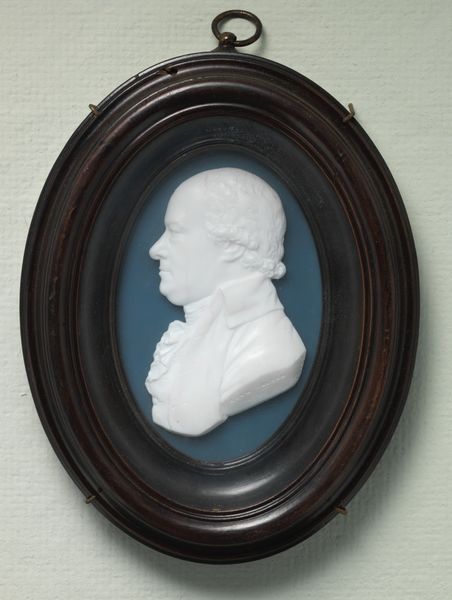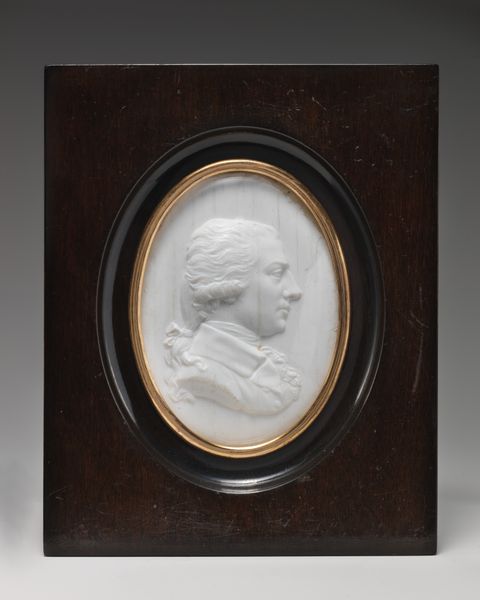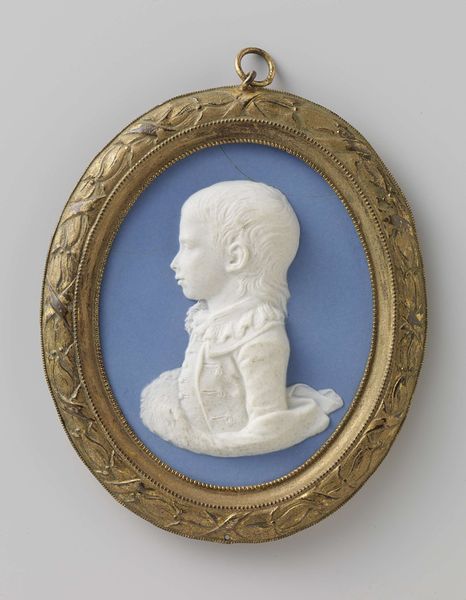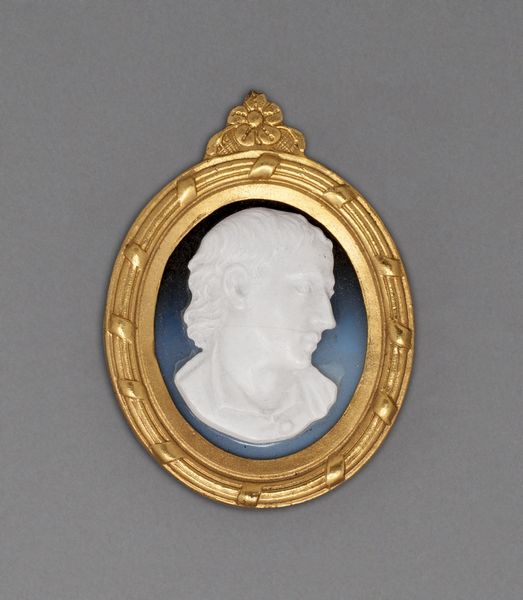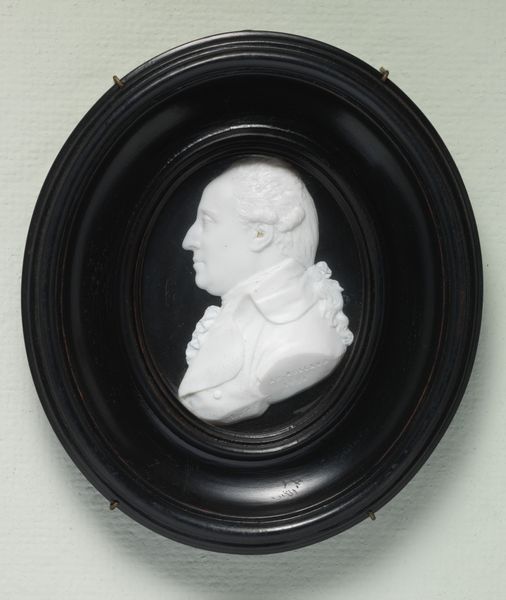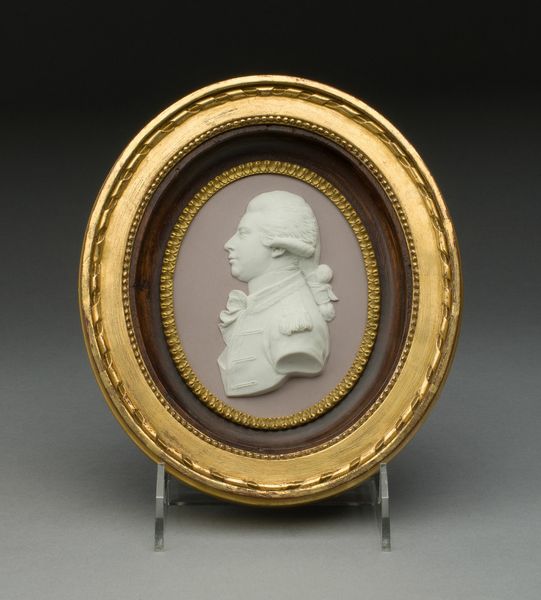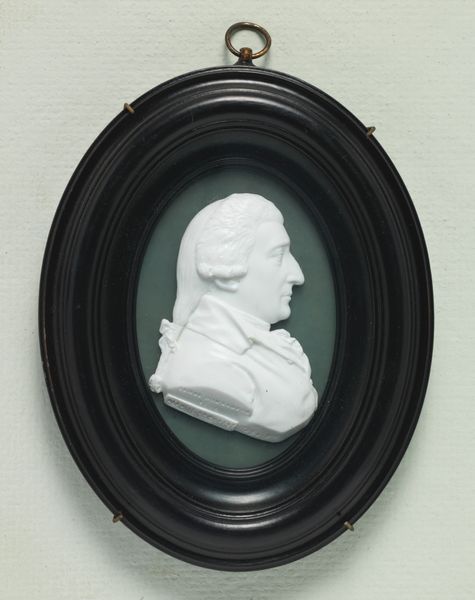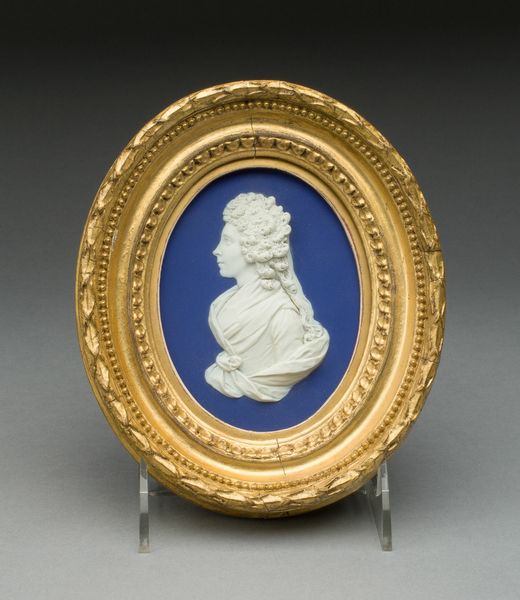
Portretmedaillon van Prins Willem van Oranje, de latere Koning Willem I 1784
0:00
0:00
relief, sculpture, marble
#
portrait
#
neoclacissism
#
relief
#
sculpture
#
marble
Dimensions: height 8.0 cm, height 15.5 cm, width 13.5 cm
Copyright: Rijks Museum: Open Domain
Editor: Here we have Johann Heinrich Schepp's marble relief, "Portretmedaillon van Prins Willem van Oranje, de latere Koning Willem I," dating to 1784. It feels very…stately, but also a bit small and precious. What's your take on this piece? Curator: As a materialist, I’m drawn to the conditions of its production. Marble, of course, suggests wealth, access to resources and skilled labor. The artist, Schepp, and his patron were actively involved in material transformations, embedding political power within the very stone. How do you think the choice of marble contributes to the message? Editor: It definitely gives it a sense of permanence and importance, more than if it were, say, plaster. Curator: Exactly! The meticulous carving of the relief also speaks to the labor involved. We must consider the social context; this wasn't just a portrait, it was a political object, an early form of mass media almost, to shape public image and reinforce power structures through widespread reproduction and circulation of the image. Editor: So, it’s not just a pretty picture. It has a purpose, practically speaking, even as a luxury object? Curator: Precisely! And consider the consumption aspect – who acquired these medallions? What messages did they convey within their homes? They functioned almost as branding. This Neoclassical style itself connects to other cultural movements which tied back to the mode of production. It goes beyond surface appearances; it represents intricate relationships between power, material, and the labour invested in creating and circulating such objects. Editor: That makes me look at it completely differently now. It's not just a portrait, it's about power, labor, and how they all come together in the art itself. Curator: It reveals so much when we examine its construction and cultural circulation.
Comments
No comments
Be the first to comment and join the conversation on the ultimate creative platform.
